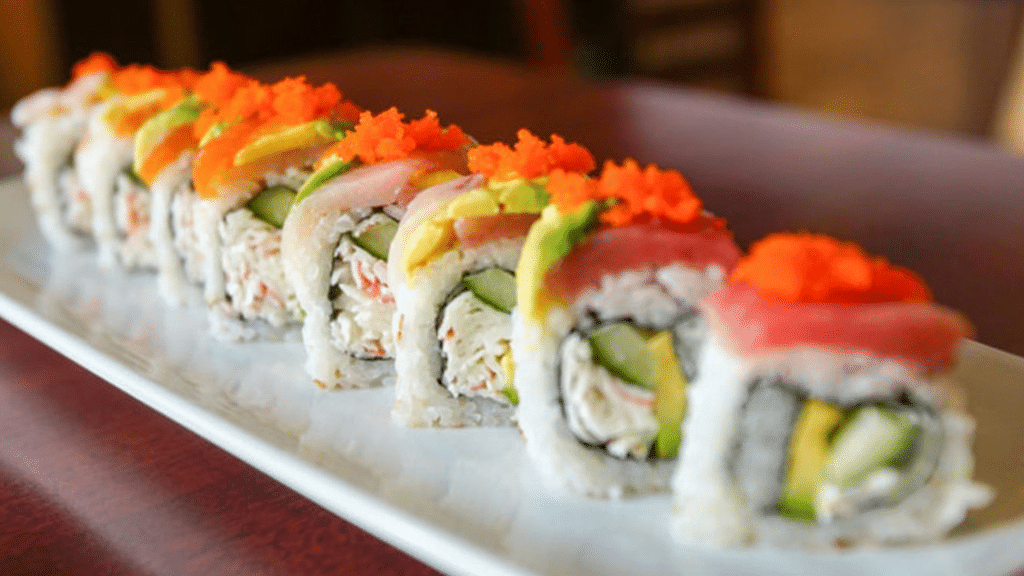
Mastering the Perfect Sushi Dipping Sauce Recipe
The art of sushi isnt complete without the ideal pairings, especially when it comes to the **sushi dipping sauce recipe**. This article is your ultimate guide to creating a delicious and authentic sushi dipping sauce that will elevate your sushi experience to the next level.

Understanding Different Types of Sushi Dipping Sauces
When we think about sushi, often soy sauce comes to mind as the de-facto dipping companion. However, theres much more to explore in the realm of sushi dipping sauces. From sweet to spicy, the variety adds a new dimension to your sushi dishes. For instance, a spicy mayo sauce can add a creamy and spicy kick to your nigiri sushi, while ponzu sauce offers a citrusy, tangy flavor that balances the richness of the fish.
1. Soy Sauce and its Varieties
Soy sauce is the most traditional dipping sauce for sushi. Its a fermented sauce made from soybeans, wheat, and salt. There are different varieties of soy sauce, such as dark, light, and tamari (which is often gluten-free). Light soy sauce is thinner and saltier, making it a perfect choice for sushi as it doesnt overpower the delicate flavors.
2. Ponzu Sauce
Ponzu is a citrus-based soy sauce that has a tangy and slightly sweet taste. Its often accompanied by yuzu, a Japanese citrus fruit that gives it a unique flavor profile. Ponzu sauce is less salty compared to soy sauce, making it a great alternative for those who prefer a lighter option. You can easily purchase ponzu sauce from your local Asian market or make your own by mixing soy sauce, yuzu juice, rice vinegar, and mirin.
3. Spicy Mayo Sauce
Spicy mayo is a popular sushi dipping sauce in many American sushi bars. Its a blend of mayonnaise and the chili paste, Sriracha. This sauce adds a creamy consistency with a spicy kick, perfect for pairing with spicy tuna rolls or other sushi varieties that could use a flavor boost.

Ingredients for the Ultimate Sushi Dipping Sauce Recipe
To create a sushi dipping sauce that caters to all palates, we will blend elements from traditional soy sauce and fusion sauces like spicy mayo. Before we dive into the recipe, make sure you have these tools and ingredients available:
- **Soy Sauce**: 1 cup
- **Yuzu or Lemon Juice**: 2 tablespoons
- **Sriracha**: 2 teaspoons
- **Rice Vinegar**: 1/4 cup
- **Mirin**: 1/4 cup
- **Sugar**: 1 tablespoon
- **Garlic Paste**: 1 teaspoon
- **Mayonnaise**: 1/2 cup
**Tools**:
For a more detailed guide on preparing the perfect sushi rice and rolls, check out this step-by-step sushi guide.

Step-by-Step Sushi Dipping Sauce Recipe
Step 1: Mix the Soy Sauce Base
Start by combining 1 cup of **soy sauce**, 2 tablespoons of yuzu or lemon juice, and 1/4 cup of rice vinegar in a medium bowl. These ingredients will form the base of your **sushi dipping sauce**. The soy sauce adds the umami flavor, while the yuzu or lemon juice offers that zesty tang which brightens up the sauce.
Step 2: Sweet and Tangy
Incorporate 1/4 cup of mirin and 1 tablespoon of sugar into the mixing bowl. Stir well until the sugar completely dissolves. The mirin adds a subtle sweetness and depth, enhancing the overall flavor profile of the sauce. This balance of sweet and tangy elements makes every bite of sushi a burst of complex flavors, perfect for your taste buds.
Step 3: Add Some Heat (Optional)
If you like your dipping sauce with a bit of heat, add 2 teaspoons of Sriracha. This spicy chili sauce complements the savory soy sauce and the acidic punch of the citrus juice. Adjust the amount of Sriracha according to your spice tolerance. Remember, it's easier to add more heat later than to dilute an overly spicy sauce.
Step 4: Creamy Goodness (Optional)
Blend in 1/2 cup of mayonnaise to create a creamy version of your dipping sauce. This step is ideal if you love the spicy mayo sauce often served in American sushi bars. The creaminess of the mayonnaise tempers the spiciness of the Sriracha, creating a well-balanced, rich sauce that pairs wonderfully with a variety of sushi rolls.

Final Touches
Tasting and Adjusting
The last step involves tasting the sauce and making any necessary adjustments. If the sauce is too salty, consider adding a splash more of rice vinegar or citrus juice. Need more sweetness? A pinch of sugar can go a long way. Make sure to stir well after each addition and taste again before making further adjustments.
Serving Your Sushi Dipping Sauce
Once you're satisfied with the taste, transfer your dipping sauce to a small bowl for serving. If you're hosting a sushi night, you might want to offer a variety of dipping sauces to cater to different tastes. Having a selection of soy sauce, spicy mayo, and ponzu can add an element of choice, making your event more enjoyable for your guests.
Tips to Enhance Your Sushi Experience
One key aspect of enjoying sushi is also to ensure you have high-quality rice. Here is a guide on perfecting sushi rice to ensure it complements your dipping sauce beautifully. Remember, the quality of ingredients significantly impacts the final taste, so opt for the best you can find.
Another tip is to use a sharp sushi knife for slicing your fish and rolls. A dull knife can ruin the texture and presentation of your sushi. If you're looking for a quality knife, consider this highly-rated sushi knife.
Storing Leftover Sauce
In the rare event you have leftover dipping sauce, store it in an airtight container in the refrigerator. The sauce can last for up to a week, but it's best enjoyed fresh. Before using the refrigerated sauce, give it a good stir as some ingredients may settle over time. If the sauce thickens too much, a splash of water can help bring it back to the desired consistency.
A Note on Clean-Up
After a delightful sushi meal, cleaning your cooking tools is crucial. Use this cookware cleaner to ensure your pots and pans are spotless. For your cutting boards, cutting board oil can help maintain their quality and longevity.
As an Amazon Associate, I earn from qualifying purchases.
Final Thoughts
Creating the perfect **sushi dipping sauce recipe** is a mix of understanding individual preferences and knowing how to balance various flavors. With this comprehensive guide, you now have the tools and knowledge to craft a sauce that could become your new favorite. Remember, the richness of your sushi experience relies heavily on the condiments you pair it with, so take the time to experiment and find what suits your palate best. Whether you prefer traditional soy sauce or a creamy spicy mayo, these sauces can significantly elevate your sushi meals from good to extraordinary.



